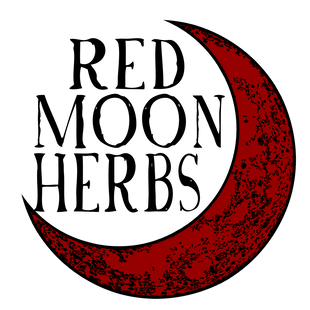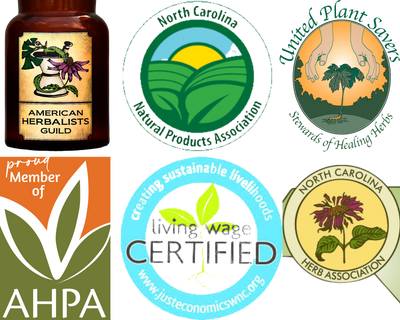In pregnancy land, everyone talks about name games and birth plans. They talk about nursery color schemes and cloth diapering, bottle warmers and bras. But almost no one tells you about the reality of keeping another human alive with nothing but your own body - immediately following an immensely life-altering experience, and, for many women, major surgery. Almost no one talks about the cracked, chapped, bleeding nipples. About how the pain goes away after a while, and how some don’t experience it at all. Almost no one talks about the mastitis. The leaking through layers of clothing. The feeling of being a dried well, or a disgruntled cow. The production anxiety. The crazy faux-bovine noises of the pump.
My son latched within a minute of me pushing him out and has been a boob man ever since. But every mama-and-baby-duo’s nursing journey is quite different, just as every nipple is a little different, every matching mouth a slightly unique shape. I know that my own nursing journey hurt so profoundly for the first two months or so that I wondered if I would ever be able to feed him without screeching and wincing in pain. Now, three-and-a-half years into nursing this little toothy piranha, it feels like the most natural, normal thing in the world. For me. It's worth repeating: every mama-and-baby-duo’s nursing journey is different.
But I can't imagine going through this journey without the help of botanicals. Let's delve into the areas of lactation where herbs can offer their benefits the most: increasing and decreasing milk supply and in specific nursing complications.
Herbs to Increase a Healthy Milk Supply
A healthy milk supply is naturally boosted when the mother herself has sufficient or surplus stores of vitamins and minerals, or else she is at risk for becoming depleted. Plants in the oat (
Avena sativa) category are well-known galactagogues - the herbal term for increasers of milk production, bringers forth of lactation. This includes all parts of the oat plant,
oatstraw and
milky oat tops and oats themselves.
My quadruple whammy for upping milk production through dietary nourishment is eating at least a bowl of oatmeal daily (jazz it up with as much good fats, nuts and seeds, and herbs and spices as you like and soak it overnight for extra bioavailability), drinking up to two quarts of
oatstraw infusion, taking
milky oats as an extract, and drinking a tea of
milky oat tops, perhaps with a pinch of fennel and fenugreek thrown in. Milky oats extract is best taken over the long-term - 6-8 weeks at a minimum and often for much longer - to best optimize its incredible benefits on the nervous system. Milky oats' mechanism of action on nursing mothers is twofold: as an oat, it’s a galactagogue and as a nervine, it promotes a healthy response to stress, which in turn allows the mother to allocate more physical resources towards productively feeding her baby. And makes mama feel better, to boot!
Vitex is an herb well-known for its direct influence on the endocrine system via the pituitary gland. Traditionally, it has been used to actually increase breastmilk production in nursing mothers. Conversely, however, vitex is also used in certain situations to dry up a milk supply and it has both galactaogue and anti-galactagogue activity. This may be because of its somewhat adaptogenic effects on hormones. Consult with your holistic care provider or herbalist before beginning to use vitex while nursing, as it may be that vitex increases the milk supply over the short term (2 weeks) and decreases it over the long-term. Know that using vitex in this way may speed along the breastfeeding mother's return to fertility and her moon cycle because of its hormonal influence.
The fresh root of ginger is considered a galactagogue, perhaps in part because of the way that ginger disperses bodily liquids, encouraging the movement of blood around the body. Be sure to take an extract from the fresh root, as the dried is not considered a milk supply booster.
Manual stimulation or breast massage is one technique that has so many health benefits, from overall breast health to decreased milk clotting, and including stimulating a trickling milk supply. I like to use our
Breast Massage Oil to do the trick, as it’s full of gentle herbs which specifically improve breast well-being.
One final strategy that I used to nourish my milk supply on an everyday basis was drinking plenty of Vita-Min, the pre-natal and lactation-friendly tea that we formulated specially to be mineral-rich, nutrient-dense and full of folate. This tea blend combines silica-laden horsetail, hormone-loving red clover, uterus tonifying red raspberry, iron-rich nettle, soothing oatstraw, and a pinch of refreshing mint (but not enough to be drying, see below).
Herbs to Reduce Milk Supply
An oversupply can be just as problematic as a lack of milk. And there are those unique situations where the mother desires to dry up her milk supply for one reason or another. An herbal approach to diminishing the fountains of lactation might involve a few different drying herbs taken as extracts:
lemon balm and
yarrow are two I like to start with, in addition to commonsense measures such as not pumping, staying hydrated, and wearing loose clothing. Alternately, you could consider a tea, though the extracts will be more potent as they enter into the bloodstream immediately and are far more concentrated.
In your research on how to dry up your breastmilk, you’ll probably come across the cabbage leaf tactic, too, which is worth a try and has some history as a folk ways solution (makes for a great #momlife selfie, too).
Herbs for Nursing Complications
I must have gone through several ounces of
comfrey oil during those first few months of new motherhood, between rubbing it on my sore, chapped nipples, using it for baby’s skin, slathering it down there to aid the healing process of my yoni tears and general birth trauma, using it on my stretch marks, and admittedly often using it as a super moisturizing facial oil (hey, it’s all purpose!). It’s a must-have to keep around for that initial tenderness and discomfort that some experience while breastfeeding. Ultra-gentle lymph stimulant
calendula oil is a lovely one to have on hand as well.
Poke root - both the
salve or
oil externally and the
extract internally - is another plant that always comes up in a discussion of nursing. It is one of the strongest acting herbs on the lymphatic system, and so very useful in cases where the lymph needs to get moving. See this article that I wrote,
Clogged Milk Ducts and Mastitis: Poke Root to the Rescue, for more on this.
Herbal Resources for Nursing Mothers
Since tiny amounts of some herbs taken internally can wind up in your milk supply, it’s critical to be aware of what you’re ingesting and in what form and what amount, whether it’s chamomile or catnip. While the ‘pump and dump’ practice is rarely necessary for most mama-baby pairs, do be conscious of what herbs you’re using, especially if they’re strong musculoskeletal relaxants, powerful nervines, or if you’re nursing a young baby who might be very sensitive. Of course, if you're at all concerned about the safety of using an herb while nursing, don't use it until checking with your resources.
I’d be lost without my vast collection of handy dandy pregnancy, birth, and lactation resources from MDs, NDs, and others in the natural health realm who I trust.
Here are a few of my absolute favorite resources for the trusty and easeful use of herbs during the 'fourth trimester' of nursing.
-
The Nursing Mother’s Herbal - this go-to manual is quite thorough and I’ve come to rely on it heavily during the 3.5 years of nursing my child thus far. It issues each herb a clear safety rating, and is also appropriate during pregnancy.
-
Conceiving Healthy Babies: An Herbal Guide to Support Preconception, Pregnancy, and Lactation - whether you’re TTC (trying to conceive), pregnant, or nursing, Dawn Combs’ is a lovely person and has a lovely book full of herbal advice on everything from fertility to kombucha to milk production.
-
The Natural Pregnancy Book - Dr. Aviva Romm is one of my heroines, a beloved teacher of mine, and the author of basically the ultimate guide on herbs during pregnancy. She includes rituals for celebrating pregnancy, lots of nutritional strategies, and advice on common concerns during pregnancy such as preeclampsia, stretch marks, UTIs, fatigue, and morning sickness.
-
Naturally Healthy Babies and Children - another Dr. Romm classic.
List of Herbs to Keep on Hand
I mentioned more than a dozen herbs above, and whether you’re familiar with them or not, it’s a lot to take in. To make it easier for you, I made a list of all the herbs I had on hand during my pregnancy.
Of course, I am not a licensed medical professional and am very limited in what I can say about any herb. Do your own research, come back to us and let me know what you find!
Disclaimer
The Food and Drug Administration has not evaluated any health related statements that may appear on this site. The products presented on this site are not intended to diagnose, treat, cure or prevent any disease.
THE INFORMATION CONTAINED ON THIS WEBSITE (WWW.REDMOONHERBS.COM) IS NOT INTENDED NOR IMPLIED TO BE A SUBSTITUTE FOR PROFESSIONAL MEDICAL ADVICE. ALWAYS SEEK THE ADVICE OF YOUR PHYSICIAN OR OTHER QUALIFIED HEALTH PROFESSIONAL PRIOR TO STARTING ANY NEW TREATMENT OR WITH ANY QUESTIONS YOU MAY HAVE REGARDING A MEDICAL CONDITION. NOTHING CONTAINED IN THIS EMAIL OR WEBSITE IS INTENDED TO BE FOR MEDICAL DIAGNOSIS OR TREATMENT.








